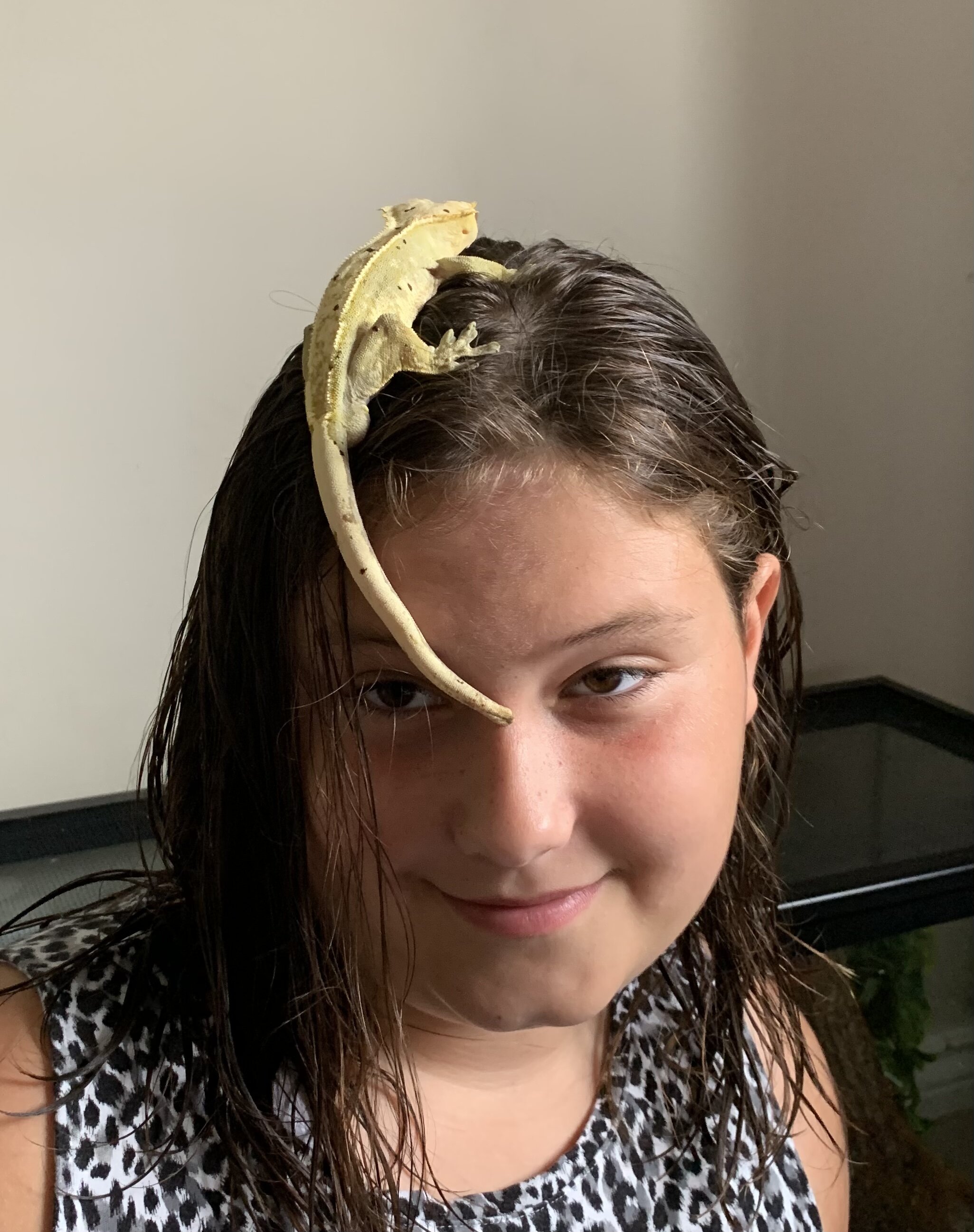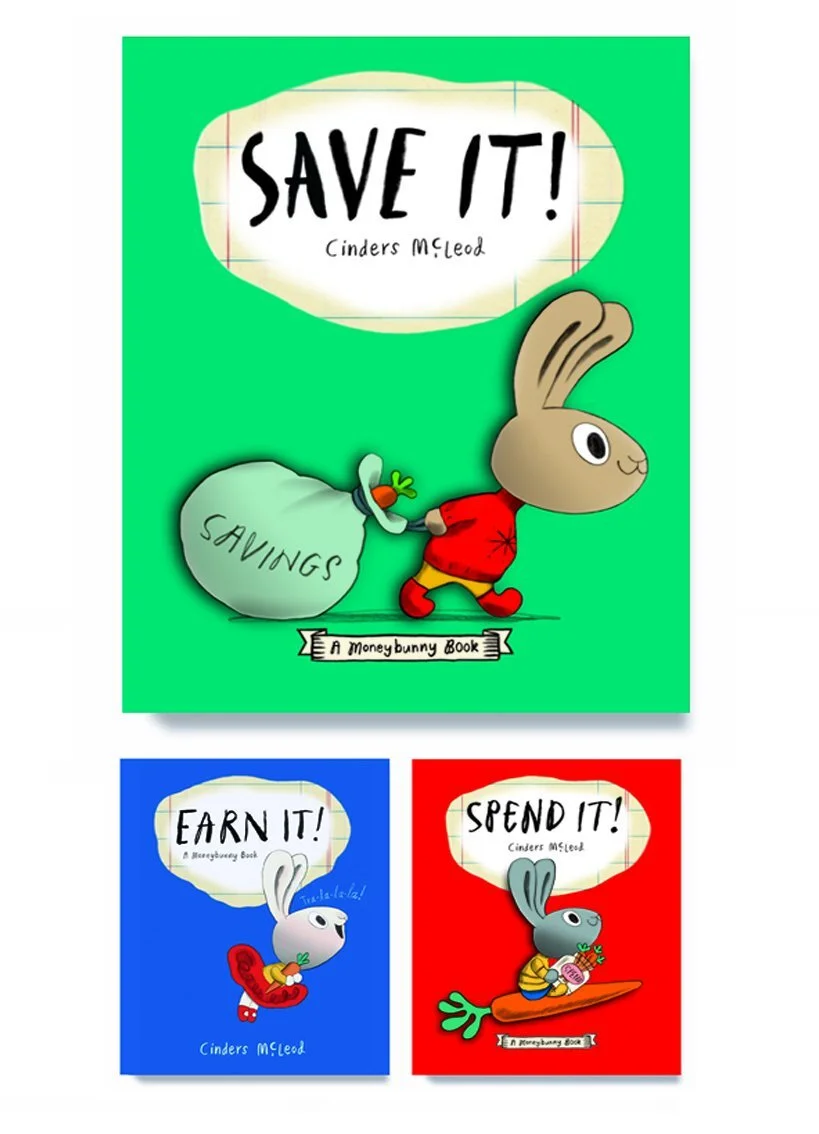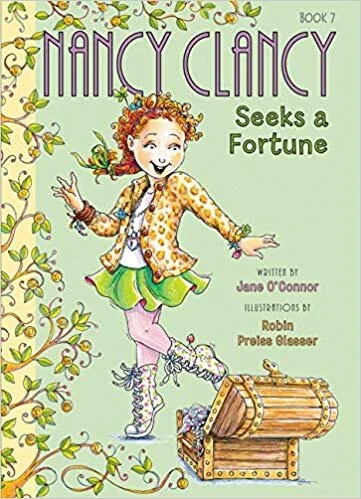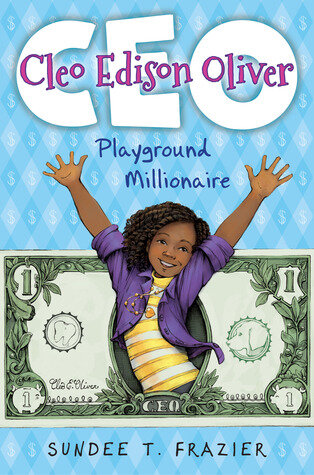Zoë’s zoo: A tale of becoming a small business owner at age 11
/Zoë and one of her Geckos perched atop her head with its tail in her face.
I have always been interested in math and science experiments (that one was unfortunate for my parents). But one thing that I have always loved is animals. Lately I have been interested in Crested Geckos! I convinced my parents to get me one as an early birthday present. Then I got a second one and then it kind of, somehow turned into 7. Gradually, 3 of them got pregnant and now I have several babies!
At the moment I have 15 crested geckos in total!
Why I love Crested Geckos
Two geckos, one in a child’s hand that is larger (Dad) and one that is much smaller on a child’s arm (hatchling)
Let me tell you why I love Crested Geckos so much! They are amazing pets for many reasons. For example, they are easy to feed and take care of, they do not require much attention AND geckos are absolutely adorable! I love their sticky feet and how they lick their eyeballs (because they don’t have eyelids and lick the eyes to keep them moist).
Crested Geckos are one of the easiest geckos to care for.
Let me tell you what you would need:
First, a habitat! Obviously they can't just roam around in your room, so you will have to buy a terrarium. A baby (up to approx 30 grams), can live in a 10 gallon terrarium. An adult crested gecko will need a 20 gallon tank. For decor, they will need a hide (like a rock cave, for example), some branches for climbing and real or fake foliage. You can decorate as much as you like. Be creative!
Brown gecko upside down in its habitat perched on a log in the middle of shedding its skin
Secondly, Crested Geckos don’t get lonely. That means you can handle them, but you don’t have to. Also, they are happy to live alone. If you decide to cohabitate them, make sure you don’t house 2 males together or they will fight.
Interesting fact, Crested Geckos will shed every month or so and they eat their own shed!!
Lastly, let’s talk food! Crested Geckos enjoy live crickets as a treat, but don’t worry, if that’s not your thing, they can live entirely on powdered gecko food. Spray the tank with water twice a day, and that’s it!
My geckos mean the world to me, but as much as I would like to, I can’t keep them all. I started selling some of the babies, and that is how Zoë's Zoo was created! Now, I even have my own website www.zoeszooreptiles.com
Tiny brown gecko perched on an index finger
So what’s it like being a small business owner at age 11?
Well…
It can be stressful at times but overall being a business owner is fun, exhilarating and just pure awesome!
If you are interested in owning your own Crested Gecko, do your research, ask your parents and feel free to visit my website! There are also many other reputable breeders around the country that can be found online.
3 photo collage of a brown gecko climbing over the top of the terrarium with the words “Yes! A chance to escape!” a second image still peaking over the side with the words “Don’t even think of stopping me!” and a final photo with the gecko perched to the outside of the terrarium with the words “FREEDOM!”






























